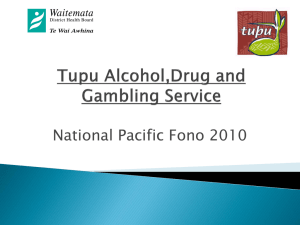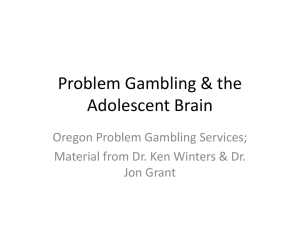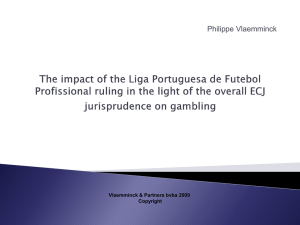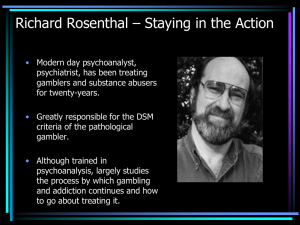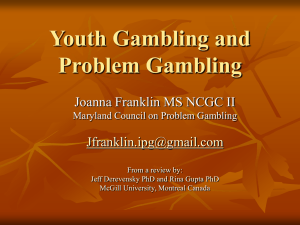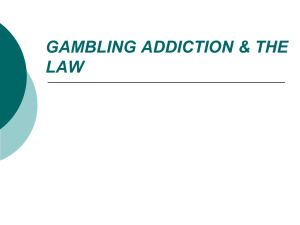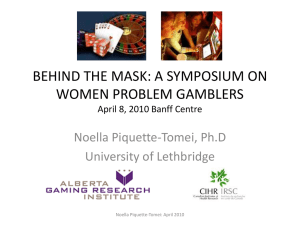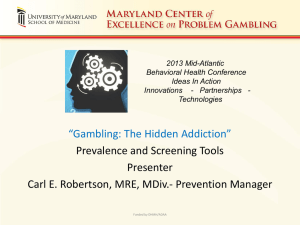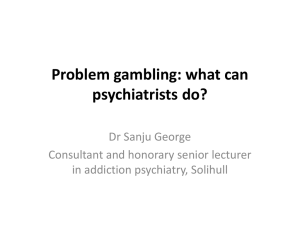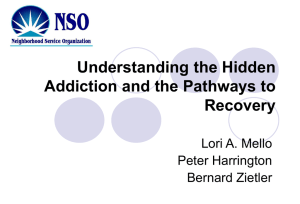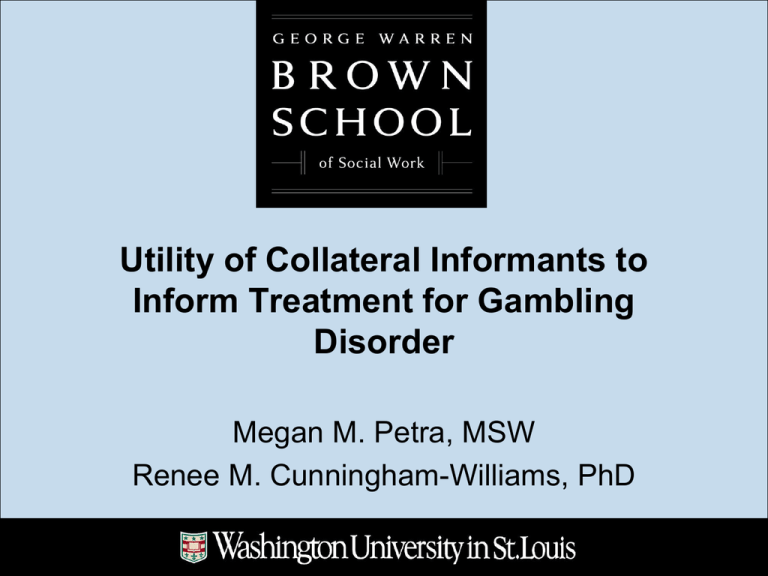
Utility of Collateral Informants to
Inform Treatment for Gambling
Disorder
Megan M. Petra, MSW
Renee M. Cunningham-Williams, PhD
Gambling Disorder (GD)
• DSM 5 now classifies Gambling Disorder (GD)
as an addictive disorder
• GD occurs in ~1-2% of the population, 1-3
• But is 6.5 times more likely in those with
substance use disorders
• Thus, clinicians are likely to have patients/
clients with GD
Screening, Diagnosis, & Treatment
• Accurate information on GD is critical 4
• But no biological “gold standard” test to verify
clients’ self-reports of gambling
• Collateral informants (CIs) may be able to
assist clinicians by providing information
Collateral Informants (CIs)
• Collateral informants are family or friends of
the client, who can report on their gambling
behavior
• If CIs’ information is accurate (concordant),
clinicians can use them to verify client selfreports
• This information will inform diagnostic and
treatment decisions
Research Objective
• Investigate concordance between gambler selfreports & CI reports
• Determine if concordance is:
– Associated with gambler-CI relationship
– Influenced by gamblers’ comorbid substance use
disorders (SUDs) or psychiatric disorders
Methods
• Community-recruited adults (N=128) who had
gambled at least five times in their lives
nominated CIs
• Gamblers & CIs interviewed separately via
phone
• Psychometric study of a computerized
diagnostic interview (C-Gam © 5)
Methods: Measures
• Gambler Measures
– DSM Gambling Disorder criteria (C-Gam © 5)
– DSM Substance Use Disorder criteria
(GAM-DA © 5)
– DSM Depression criteria (CES-D 6)
– DSM Personality disorder criteria (SCID-II 7)
• CI Measures
– DSM Gambling Disorder criteria for the gambler’s
behavior (GAM-CI © 5)
Methods: Concordance
• Cohen’s kappa (κ) & Interclass Correlation
Coefficient (ICC)
• Κ & ICC interpretation8:
–
–
–
–
–
Fair (0-.2)
Poor (.2-.4)
Moderate (.4-.6)
Substantial (.6-.8)
Almost perfect (.8-1.0)
• Comparisons made via Fisher’s Z
transformation
Results: Participant Demographics
• Gambler sex: 46% male, 54% female
• Gambler race: 76% Caucasian, 19% AfricanAmerican, 6% Other
• Gambler-CI relationship: 49% family member,
51% friend
Results: Overall Concordance
Concordance and
Gambler-CI Relationship
Concordance and Gambler
Personality Disorder
Concordance and
Gambler Depression
Concordance and Gambler
Substance Use Disorders
Implications
• Treatment providers can be confident in using
CIs to verify gambler self-reports
– Concordance is likely to be moderate – substantial
– Concordance is unaffected by gamblers’ comorbid
conditions
• Family members are better to use as CIs than
are friends
Conclusions
• CIs are a valuable source of information which
treatment providers can use to inform
diagnosis of Gambling Disorder, and treatment
decisions
References
1.
2.
3.
4.
5.
6.
7.
8.
Shaffer, H. J., Hall, M. N., & Vander Bilt, J. (1999). Estimating the prevalence of disordered gambling
behavior in the United States and Canada: A research synthesis. American Journal of Public Health,
89(9), 1369-1376.
Welte, J., Barnes, G., Wieczorek, W., Tidwell, M., & Parker, J. (2001). Alcohol and gambling
pathology among U.S. adults: Prevalence, demographic patterns and comorbidity. Journal of Studies
on Alcohol, 62, 706-712.
Petry, N. M., Stinson, F. S., & Grant, B. F. (2005). Comorbidity of DSM-IV pathological gambling and
other psychiatric disorders: Results from the National Epidemiologic Survey on Alcohol and Related
Conditions. Journal of Clinical Psychiatry, 66(5), 564-574.
Westphal, J. R., & Johnson, L. J. (2003). Gender differences in psychiatric comorbidity and treatmentseeking among gamblers in treatment. Electronic Journal of Gambling Issues, 8, 79-90. Retrieved
from http://www.camh.net/egambling/
Cunningham-Williams, RM. Computerized Gambling Assessment Module (C-GAM). St Louis,
Missouri: Washington University; 2003.
Radloff, LS. The CES-D Scale: A self-report depression scale for research in the general population.
Applied Psychological Measurement 1977;1:385–401.
First, MB.; Spitzer, RL.; Gibbon, M.; Williams, JBW.; Benjamin, LS. Structured clinical interview for
DSM-IV personality disorders (SCID-II). Washington D. C.: American Psychiatric Press; 1997.
Landis, J. R., & Koch, G. G. (1977). The measurement of observer agreement for categorical data.
Biometrics, 33, 159-174.
Acknowledgements
•
•
NIDA grants: T32DA07313 (Megan M. Petra,
Fellow; Renee M. Cunningham-Williams,
Director), K01DA00430 (RCW), R01
DA015032 (RCW)
Author contact: mpetra@wustl.edu

